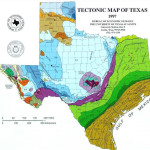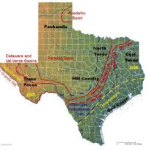Is Texas Shakin’ Away?

Robert Menard
Certified Purchasing Professional,
Certified Professional Purchasing Consultant, Certified Green Purchasing Professional, Certified Professional Purchasing Manager
When the average American thinks about earthquakes, what comes to mind? Certainly, California; it has more and more severe quakes than any other stated. This is due to the geology of faults and tectonic plates. The Pacific Ring of Fire, in which the entire west coasts of the U.S and Canada share major exposure and risk are well known.
If you live in Texas, whether or not connected with the Oil and Gas (O & G) industry, it is impossible to ignore the claims by some of the “scientific connection” between hydraulic fracturing and incidence of earthquakes. This map of fault lines shows that the geologic facts. Fault lines and consequent earthquakes are as much a part of Texas as the climate. Both have always been here and have little to do with man’s dithering around the edges.
Compare the Texas Tectonic map to the Texas Earthquake map. To anyone with more than freshman geology credentials, it is obvious that the incidence of 
 earthquake locations overlay the fault lines. Whether earthquakes are mathematically correlated to fracking is in serious doubt.
earthquake locations overlay the fault lines. Whether earthquakes are mathematically correlated to fracking is in serious doubt.
Fracking and Quakes: History or Hysteria
The Barnett Shale formation is an energy rich source of natural gas in north Texas, particularly the Dallas Ft Worth (DFW) metroplex, is also the source of claims of fracking induced earthquakes. Many of these claims allege that underground disposal wells for used fracking water have caused the earthquakes. Some also claim that hydraulic fracking is the cause but scientific data is scarce. Correlation, especially when wrought of politics, does not equal causation. One way to eliminate specious speculation is to recycle fracking water instead of underground injection.
The Texas Railroad Commission TRCC) , which, despite its title, has control over the O & G industry in TX, has hired a seismologist but has expressed public doubt about the connection between earthquakes and disposal wells. According to TRCC Commissioner Christi Craddick , “With over 34,000 of these currently operating in Texas, it is important that sound science be our guide in determining if there are any links to seismic activity.”
What do you think?
Energy production and distribution is a needlessly confrontational issue in the U.S. We and the world thirst for more energy sources. We will someday perfect solar, wind, water, and other renewable energy sources. However, until “someday” arrives, we must capitalize on the providential gifts given us by geography and geology.